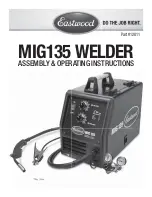
BYOP (Bring Your Own Processor)
Unlike other all-in-one systems that include
source inputs and utilize their own active
applification and Dolby Digital/DTS
decoders, the Mythos SSA-50 provides
none of that. Instead, it relies on your
current A/V receiver for the amplification
and processing for whichever format you
choose — or a future A/V receiver, if you
plan to upgrade. In this respect, it’s no
different than having five separate speakers
in your system, except for the fact that all
the speaker wires run to the same place: a
heavy-duty bank of binding posts on the
back of the Mythos SSA-50. In a small
way (again, literally), this is a tiny problem.
The short height of the cabinet and the need
to keep the posts near one another for wall-
mounting unfortunately requires that the
posts be placed very close together. This
makes it a bit of a pain when you’re using
anything larger than bread twist-tie wire
to hook up the speakers. I’m not sure I
know of a good solution to the problem,
though, so it’s a good thing you only have
to connect the wires once.
Another byproduct of packing so many
speakers into such a small cabinet is that,
short of using some sort of quantum entan-
glement effect, there’s no way to get the
kind of bass you need for a real home the-
ater. So, as with most of the Mythos speak-
ers, a subwoofer is almost mandatory. For
my modest-size room, Definitive sent a
300-watt 8-inch active/8-inch passive
ProSub 800 ($399) which turned out to be
an ideal match for the Mythos SSA-50.
Why Did the Speaker Cross
the Talk?
Now we have what are essentially five
bookshelf speakers jammed into one
cabinet sitting in the front of the room.
Although this is similar to the way most
department stores demonstrate their HTIB
systems, it doesn’t usually make for great
surround sound. Well, while you can
think of the Mythos SSA-50 as being a
collection of five speakers, it’s actually
loaded with drivers, twelve in all, in an
unusual configuration.
To begin with, in order to shave some
inches off the width of the cabinet, Defini-
tive mounted the 1-inch aluminum-dome
tweeters for the LCRs smack dab in front
of three of the midbass drivers. Putting a
tweeter — or anything else, for that matter
— in front of another driver can easily
muck up the sound, so Definitive designed
a special geometry for the tweeter housing
that’s meant to minimize this issue.
Of the twelve drivers, only eight of them
directly reproduce the five channels. So
what’s up with the other four? They’re
crosstalk-canceling drivers — part of what
Definitive calls Spatial Array technology
— and they work in conjunction with
every channel except the center. Very
simply, if you’re listening to a speaker on
your left, the sound it creates arrives at your
left ear first and then, a tiny bit later, makes
it to your right ear. This sound mix-up is
called interaural crosstalk, and it does detri-
mental things in stereo imaging. Two of
these extra drivers are dedicated to cancel-
ing out the crosstalk created between the
front left and right speakers by producing
an inverted audio signal. The other two pro-
vide the same service for the left and right
surround drivers. This particular aspect
makes the Mythos SSA-50 a great deal
different than systems that rely on the
listening-room walls to create the surround
effects by reflecting the sound. Room
layout doesn’t affect the Mythos SSA-50’s
performance nearly as much as some other
all-in-one speakers.
Although the surround drivers are sitting
in a box in front of you, Definitive uses a
technique known as a head-related transfer
function (HRTF) to trick you into believing
that sound is coming from the back of the
room. A filter on the surround drivers
changes the sound’s spectral balance in a
way that mimics how the shape of your ear
affects sounds that originate from behind
your head.
Spinning an Amazing Tale
It’s amazing how well the combination of
crosstalk cancelation and HRTF works for
both enhancing the separation among all the
channels and wrapping the surround effects
around the room. In Spider-Man 3, for
example, as New Goblin chases Spider-
Man for the first time, you get the very real
sensation that the characters, as well as New
Goblin’s flying bombs, are moving vigor-
ously around the room. Even more impres-
sive, though, is how well the Mythos SSA-
50 transitions from the fast-paced mayhem
to the more subtle, quiet city sounds after
the chase is over. Later in the movie, as the
soon-to-be Sandman stumbles into the
middle of a particle physics test (I hate
when that happens), the sound of the test
apparatus spinning around the room is
almost dizzying.
In the bone-chase scene in Night at the
Museum, when Ben Stiller first meets the
flesh-challenged T. rex, the Mythos SSA-
50 reproduces subtle details in music and
sound effects without being harsh or
overemphasizing — something that not all
single-cabinet systems are adept at. Stiller’s
tentative whispers clearly and cleanly echo
throughout the empty museum and are soon
followed by the loud shaking and rattling
of the T. rex’s skeleton. In both cases, soft
and loud, there was no sense of fatigue or
“the room layout
doesn’t affect the
Mythos SSA-50’s
performance nearly as
much ... a great deal
different than systems
that rely on the listen-
ing-room walls to create
the surround effects by
reflecting the sound”
“the speaker cabinet
almost disappears”
H I G H L I G H T S
Connections for all five speaker
channels
Wall-mount bracket and top-of-TV
leveling feet included
Uses your AVR’s surround process-
ing circuitry





















